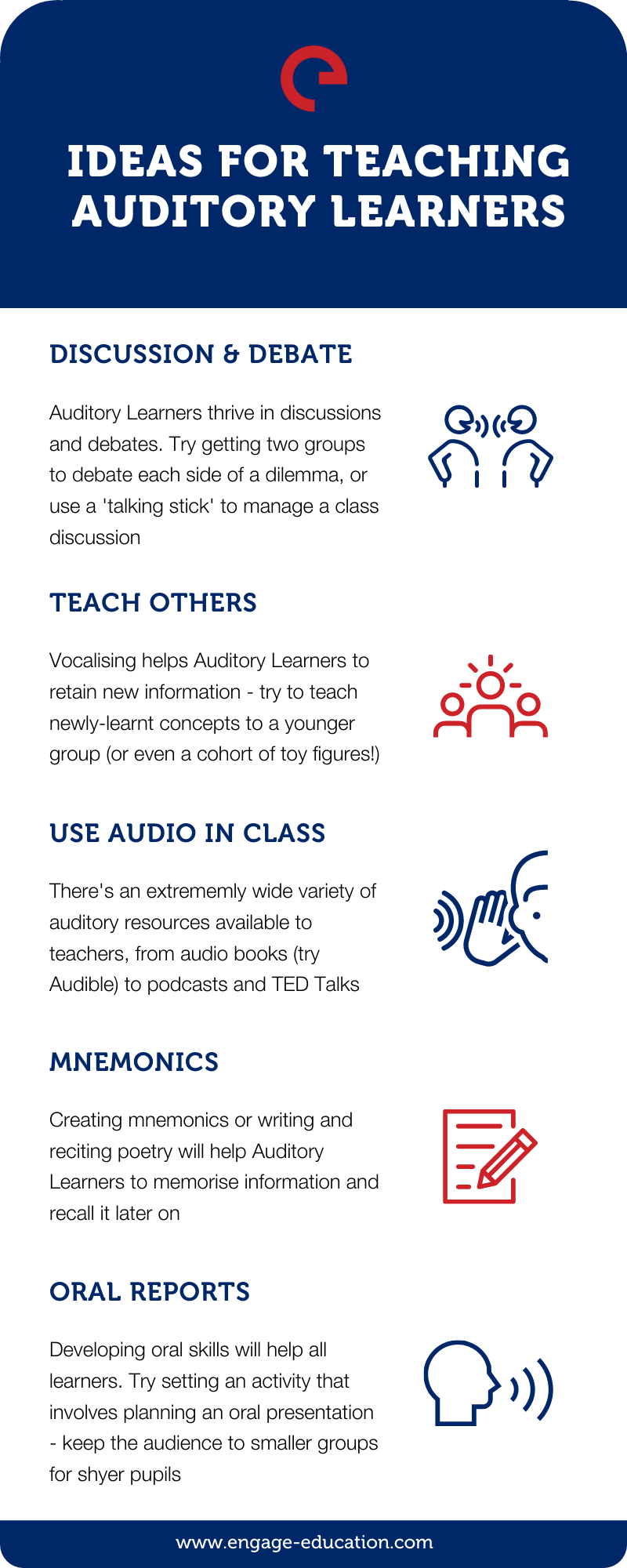

This technique of learning is easier and far more comfortable for kids and is a better way to gather knowledge than most other forms. The definition and concept of auditory memory are from Ulric Neisser. Our brain can copy a sound weve heard and keep it inside the brain for a short time. If you notice that your kid asks plenty of questions, then she or he is almost certainly an auditory learner. Also known as echoic memory, or auditory sensory memory, this is a form of short-term memory. If you have observed that your child learns better through audiobooks, songs, stories, and discussion than through visual text of information, chances are he or she is an auditory learner. Auditory learning is a type of learning where the kid learns the information by simply hearing it.

You can sing letter songs, sing out a word that is difficult to spell, or make up a silly song to help your child understand a teaching lesson. They absorb information best through hearing or listening and learn best through verbal instruction. Sing Songs Auditory learners tend to enjoy music and find that it really helps them remember things, especially if they are listening and singing along to the lyrics. They also hum or talk to themselves a lot. Auditory learners make up about 30 of the population. This is the child who can’t stop talking! These kids have a very difficult time reading silently and are often observed talking or moving their lips when writing things down. Your eyes, ears, and sense of touch play essential roles in the way you. Enjoys actively participating in discussions, both in. Auditory, and Kinesthetic Learners Three of your senses are primarily used in learning, storing, remembering and recalling information. Is able to process information, such as instructions or content information, without writing it down. On today’s post, I am going to focus on the Auditory Learner and give you activities and strategies to teach your child with this learning style. Learn more about visual, auditory, and kinesthetic learning styles. This helps the information that they are learning “stick.” Using all of the child’s senses when teaching, activates the different parts of the brain. Multisensory instruction means that the kids have to see it (visual), hear it (auditory), touch it (tactile) and do it (kinesthetic). While most of us may have some general idea about how we learn best. And, in that case, he says, there's a lot of common ground. So, how do we teach to different learners? We use what is called Multisensory instruction. There are 4 predominant learning styles: Visual, Auditory, Read/Write, and Kinaesthetic. Willingham suggests it might be more useful to figure out similarities in how our brains learn, rather than differences. Some are more visual or auditory type learners while others tend to be more kinesthetic and use their entire body to learn. Auditory learning is an active style of consuming information where the child learns most effectively through listening and talking.


 0 kommentar(er)
0 kommentar(er)
